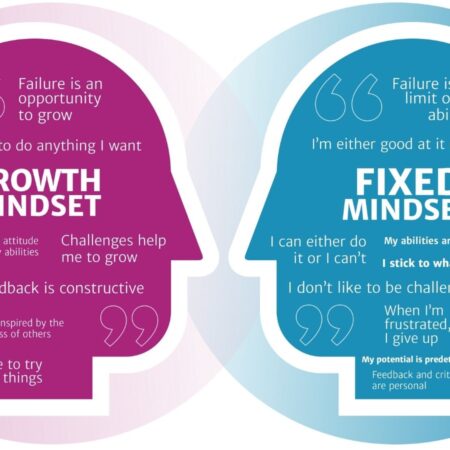Feedback is a critical part of building an adaptive organisation. While people have talked about how to give effective feedback, little has been said on how to receive feedback. In the early years of Radically, we tried to build a strong feedback culture, and frankly, we overdid it. We were so passionate about the growth of our people that feedback came too thick and fast, and it all became a bit much. We have now reached a happy balance, and through that journey learned a lot I would like to share our guide on how to receive feedback.
An adaptive culture is an important part of enterprise agility. It is a culture that helps people prepare for change and build the ability to lean into uncertainty, rather than fear it. One way to build this is by applying a growth mindset. People with a growth mindset see failure as a way to identify their current level of competence, thus making them more likely to feel more comfortable in an environment where they can rapidly experiment and learn.

Helping people develop a growth mindset is an important part of the work we do at Radically and one of the tools we use to help people develop one is feedback.
Many people really struggle to both give and receive feedback. And us Kiwis seem to especially struggle with it. New Zealanders tend to be quite indirect. We tend to prefer subtle suggestions, indirect hints and innuendo. While plenty has been written about how to give feedback, little has been written about how to receive feedback.
In 2019 I wrote this guide on how to receive feedback for the Radically team. I share it here with you today in the hope that it might help you.
How to receive feedback
First off, let me provide some context. I was bought up in conservative, suburban Christchurch. People who were direct were considered somewhat crude and uncultured. Like the rest of NZ, few around me were direct. When I started my consulting career, and it was now part of my job to give and receive feedback, it is fair to say it did not come naturally. In particular, I had moments when receiving feedback was hard and my response, mostly internally, was emotional.
Over time, I realised that many others are the same. And that is why I wrote this guide. It is for those of you who might at first struggle to receive feedback. Here is how I learned to do it.
Acceptance - first off, don’t be surprised if your response is emotional. It’s natural to feel knocked if you are not used to receiving feedback. The way I approach this is to notice the emotion, accept it, and then simply let it pass over me. I learned not to fight it. Just observe it, accept it and let it run its course. Breathing deeply helps.
Objectivity - now give yourself time to allow the emotion to fade away into the distance. For me, this sometimes means leaving it overnight and thinking about it the next day with a clear head. Once you do this, you can observe the feedback objectively. Try to imagine being a neutral third-party observer who was listening to the feedback. Could it possibly be true? Is it possible that with the emotion removed, the perspective offered could be valid? Most of the time, you will find it is.
Helpfulness - the next step, while you are in an objective viewpoint, is to ask yourself whether the feedback is actually useful. Does it help you grow and become a better person? If the feedback was indeed correct, by taking it on board, could you take something from it and grow?
Perspective - now take the time to reflect on why the person gave you feedback. There is often little personal benefit for the other person in feedback. So why did they give it to you? The purpose here is to build an appreciation for the fact that someone was courageous enough to tell you the truth for your benefit. Maybe, just maybe, they were trying to help. So start by offering them thanks, even if it is just in your head 😉
Changes - If you were to make changes because of this feedback, what would they be? What might be involved? List out the key things you would do. And finally, double-check by considering how will you know the changes have stuck?
Effort - some changes require a lot of effort. And sometimes you might not have room in your life to make those changes. Be honest with yourself! If it is too much effort right now then that’s fine. Make note of it and consider implementing it later.
Implementation - assuming you decide to do it, then get on with it! Don’t analyse, don’t think too much, just make a decision that you are going to give this a go and do it.
Follow-up - now comes the moment of truth - go close the loop with the person who gave you the feedback. Discuss whether you are going to do something, what your plan is and ask them to be part of the solution by periodically checking whether the change you are making has stuck.
Summary
I have used this simple, 8-Step model to help practice receiving feedback and it has greatly helped me. I hope it goes some way to helping you too.
Please feel free to share your comments and any additional suggestions you have below and let's learn to improve NZ’s feedback culture one step at a time!
